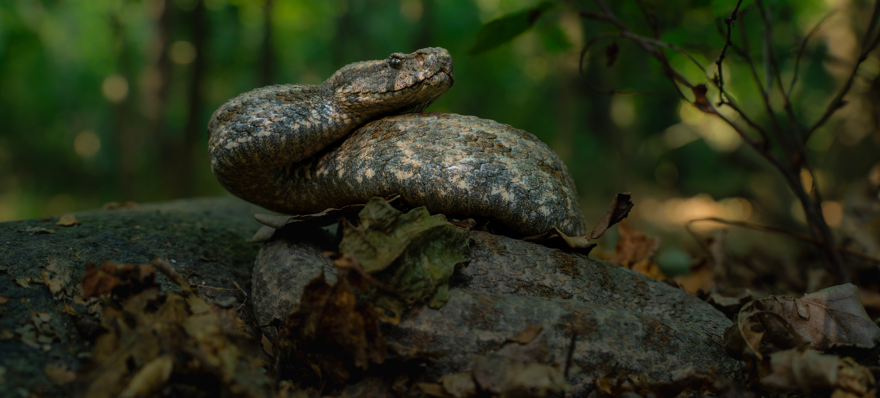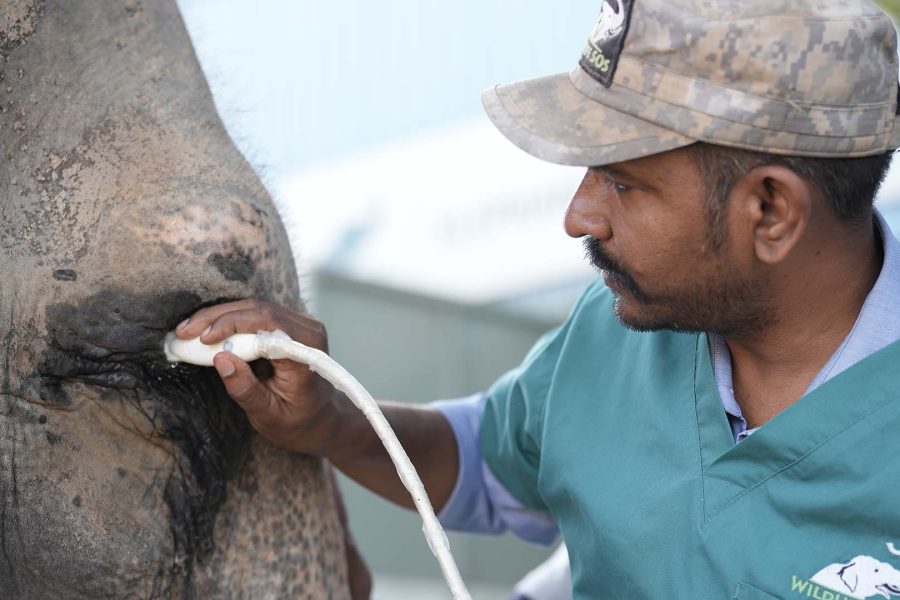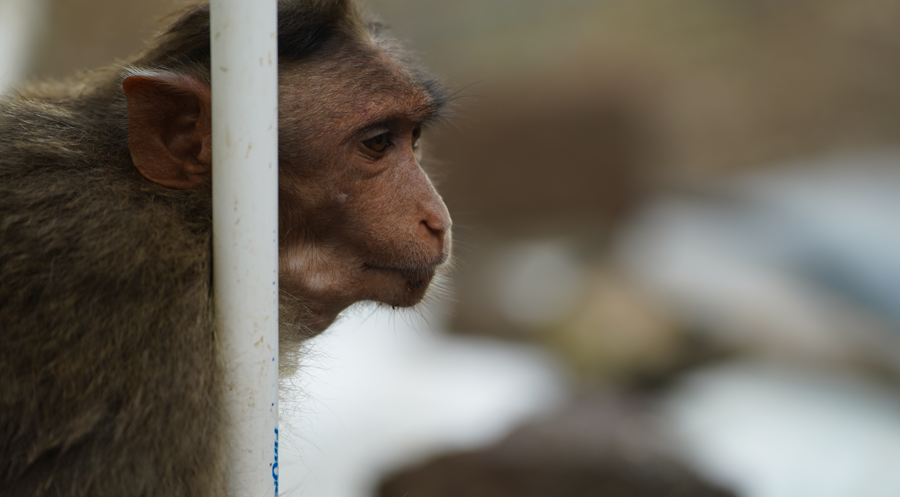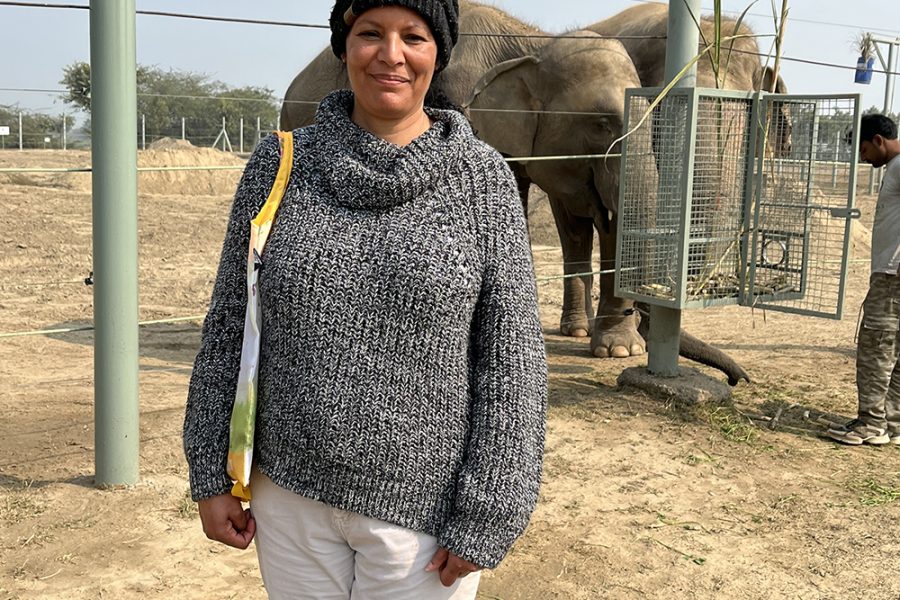Reptiles are ubiquitous but cryptic. It’s always challenging to understand their behavioural pattern and ecology in natural habitats, especially when rescued reptiles are released into wild areas that may not be their original habitats. Snakes caught in conflict situations are often rehabilitated in forest lands, but the ability, pace or success of their adaptation in unfamiliar areas raises a big question mark. Wildlife SOS is working successfully in many parts of India, and is actively involved with the rescue and rehabilitation of wild animals, including snakes, as well as projects on conflict mitigation. In collaboration with the Jammu and Kashmir Wildlife Protection Department, Wildlife SOS is running its caregiving centres for rescued Asiatic black and Himalayan brown bears at Dachigam and Pahalgam. The teams operating here actively perform reptile rescues as well from in and around the Srinagar region of Kashmir.
The Levantine viper or the blunt-nosed viper is one of the snakes caught in most conflicts, with our Rapid Response Unit receiving frequent calls of unexpected sightings from Srinagar. Once safely rescued and deemed fit, the team releases the snake into a wildlife protected area. While these are suitable forested areas, it may not be the same from where the snake belonged to or had emerged from. One significant way to understand how these translocated snakes adjust to the environment of a novel habitat in order to thrive is to monitor their movement pattern.
To understand the ecology, routes as well as the activity pattern of these snakes, Wildlife SOS devised a plan to conduct a radio telemetry study. The size and body weight of rescued snakes were recorded, and a radiographic examination was performed to evaluate skeletal damage (if any). Gravid (egg carrying) females were eliminated from the process. But before we delve into the nitty gritties of the study, let’s recall what we currently know of the Levantine viper species.
Levantine vipers, distributed across North Africa, the Middle East, and Central Asia, are formidable members of the viper family. With their large size and variable colour patterns, they command attention wherever they roam. In the Indian subcontinent, the Macrovipera lebetina, finds its home amidst the mountainous terrain of Jammu and Kashmir, where it is locally called gunas. They are mainly found in dry and rocky habitats at about 1000-2500 m above sea level. Adults usually feed on small mammals, rodents, and birds, and the younger ones prey on smaller reptiles like lizards. Their role as predators, especially in Kashmir, is integral in maintaining ecological balance. Levantine vipers belong to WHO’s Category 2 of venomous snakes. Though they are listed as ‘Least Concern’ by the International Union for Conservation of Nature (IUCN), the species faces numerous threats in their native habitat.
Rapid urbanisation and habitat fragmentation in Kashmir have led to an alarming increase in Levantine viper sightings in urban areas, signalling a pressing need for conservation efforts to mitigate human-snake conflicts. In response to this challenge, Wildlife SOS has been at the forefront of rescue and rehabilitation efforts, focusing on conflict species like the Levantine viper.
The recent initiative to conduct a radio telemetry study on Levantine vipers represents a crucial step towards understanding their behaviour and ecology in the wild. Nine rescued snakes were safely fitted with radio-transmitters after checking their body weight and size so that no obstruction is caused in their movement. The study aims to gather information on areas they head towards, and how well they are able to adapt to their new environment. Very High Frequency (VHF) transmitters, which remain active for nearly 45 to 50 weeks, have been used to track the snakes.
The objectives of the research project are multifaceted, aiming not only to study the survival and ranging patterns of rescued, translocated snakes, but also to understand its habitat preferences, interspecies interactions in the habitat, and hibernation behaviours. Through the deployment of radio telemetry devices, Wildlife SOS seeks to track the movements of Levantine vipers released into the protected area to gain valuable insights into their daily activities and survival strategies.
Moreover, the study aims to compare the survival and ranging patterns of translocated snakes with those of non-translocated individuals, offering valuable data for conservation management interventions within their habitat range. By developing a translocation protocol based on the study’s scientific findings, Wildlife SOS hopes to optimise the relocation process, ensuring the welfare of both the relocated snakes and the existing wildlife populations in the study area.
As winter season has passed Kashmir, the study will reveal hibernation behaviours of Levantine vipers, unravelling another layer of their intricate ecology. Through meticulous observation and cutting-edge technology, Wildlife SOS endeavours to safeguard this iconic reptile, paving the way for its harmonious coexistence with human communities in the fragile ecosystems of Kashmir.
By bridging the gap between scientific knowledge and on-the-ground conservation efforts, Wildlife SOS continues to ensure a brighter future for both humans and snakes alike in the breathtaking landscapes of Kashmir. You can be a part of the organisation’s efforts by supporting our cause.





